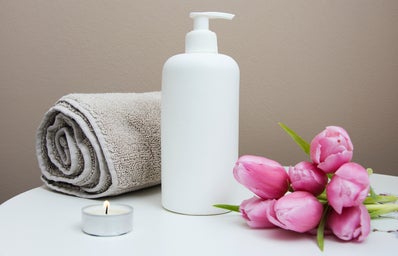Dewy skin— so sought after yet so hard to achieve. The problem is my skin is nowhere near perfect so the low-coverage “glowy” formulas are not exactly my best friend. Over the years, I have strived to achieve the look of a radiant, glowing goddess with very much trial and even more error. With hours of YouTube videos watched and tips collected, I’ve finally gotten my routine down to a science and here I am, to share it with you.
Step 1: Moisturize
The first step, before any makeup-related product touches your face, is to moisturize. This goes for girls with oily skin too. Moisturizer is always your friend. Make sure your face is properly hydrated or any makeup you put over it will cling to the weird textured patches that grace our faces all too well.
Step 2: Primer
I personally never believed in primer until I found the one that made all my concerns disappear. For a dewy look, I would recommend something designed to moisturize, illuminate, hydrate… you get the idea. Basically anything with these keywords will help achieve what we’re setting out to do. This will really transform any foundation to make it truly work for you and the desired look. My favorite is Smashbox Primerizer. I bought it once and haven’t felt a need to readjust.
Step 3: Foundation
Now we go in with the foundation. I use Lancome Teint Idole for a few reasons. Mainly, it’s hard to find a foundation that correctly matches my skin tone and this blends in perfectly. That alone is very valuable to me. Add in the fact that the glorious formula requires very few pumps, I almost feel like it really is worth the money. However, using a foundation this expensive is absolutely not a requirement to achieve this, or any, look.
When it comes to foundation, if you want the finish to look dewy, not cakey, first put on a light layer to even out the skin. Do not go in heavy-handed with a blanket of foundation from the jump. I start with about one pump and dot it on my face, placing most of the product in the center. If I feel like I need some extra coverage for redness, (we’ll worry about breakouts and blemishes later) I’ll add another light layer, but I do this very carefully. I don’t want my skin to look like it’s suffocating or dying for a sip of water.
Step 4: Concealer
After I’ve blended in my foundation with a Real Techniques stippling brush, I begin to tackle any blemishes, dark marks or areas of discoloration. For acne, I take my concealer and pop it right on top of the spot. The trick is to blend the outer areas of the concealer into your foundation and try to leave most of the product on top of your actual spot. I do this with my ring finger and I feel no shame whatsoever. I actually read somewhere that the legendary Pat McGrath only uses her hands. Whether this is true or not… I don’t know. But I will continue to channel her as I do my makeup every morning.
By covering each spot individually, rather than blanketing your whole face in foundation to cover a few marks, it will look so much more natural.
Step 5: Blend
Once I’ve finished foundation and concealer, I use a damp beauty sponge to make sure everything looks super blended and skin-like. I make sure most of the water has been wrung out (if it’s too damp it will just take off your makeup) and lightly tap it over my skin. Going over it with the sponge will help to eliminate any areas that look a little powdery or cakey.
Step 6: Highlight
I like to take a champagne colored highlight and dust it along all the high points. Cheekbones, brow bones, nose bridge and even the center of your lids will have a nice sheen to them after this. I typically blend it in with a smaller brush to make sure it’s targeted in the right areas. A fan brush is not my favorite choice for this step. Becca highlighters are also my one true love(s). Okay, maybe that’s a tad dramatic. But I really did buy my first Champagne Pop in high school and I haven’t looked back since.
Step 7: Powder
After this, you can tap some loose powder into your skin but keep it in the areas that get oily. Generally the inner cheeks, nose, forehead, and chin are fair game. However, stay away from those cheekbones.
Step 8: Setting Spray
The last and possibly most extra step (if that’s even possible) is to spray on a dewy/hydrating/skin transforming finishing spray. I use Mac Fix+. I just spray a few heavenly sprays at about an arm’s length and watch my skin begin to glow. This could be in my head. But I’m almost certain it’s not.
Another pro tip: add some glow product in the mix. You can put it on your face after primer and before foundation ~or~ mix it in with the primer itself. Some choose to mix it in with their foundation, but I find it’s hard to get the right ratio and this inevitably ends in wasting product.
This method has been practiced faithfully in my mirror every morning, so you know you can trust it. In fact, if you’re lucky I might even drop the video tutorial, of which I also practice in my mirror every morning. Dewy skin is very in and believe me, I’ve tried to achieve it through many different products marketed for this exact purpose. This is the only way that has never failed me.
But, if it ever does… don’t worry, I’ll have another guide ready to drop.



